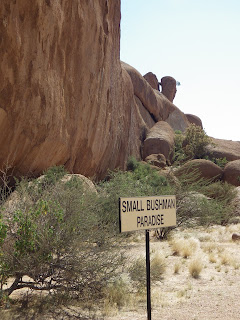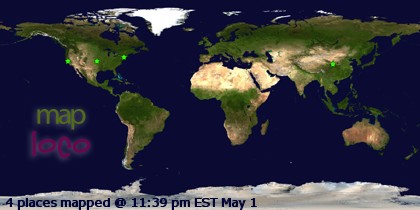 |
| Desert and mountains |
 |
| Sticking up, but not quite like the Matterhorn |
 |
| Do you have one of these near your house? |
 |
| From just around the corner |
 |
| Houses made out of oil drums |
 |
| The school |
 |
| Houses smaller than cars |
 |
| Imagine if Banff National Park had this as an office |
 |
| It looms |
 |
| Now there are house sized boulders |
 |
| Still in the desert |
 |
| Van in the campground for scale |
 |
| Those leaves are full sized |
 |
| A joke, but only slightly so |
 |
| Probably only a month old |
 |
| The art is in the shaded area at the base of the rock |
 |
| No idea why it's called this |
 |
| Lions |
 |
| Ummmm... not sure |
 |
| Rhino |
 |
| Aliens. Or small octopus |
 |
| Zebra |
 |
| Good looking bouldering |
 |
| Ascent routes are all up the cracks |
 |
| One of the caves in the campground |
 |
| More deadly plants appear |
 |
| It may not look it, but that's actually grass |
 |
| Mountains appear |
 |
| How most things move around in northern Namibia (and Botswana) |
 |
| Wonder what shops are in the mall? |
 |
| Not a crossing sign where I live |
 |
| Sorry about the post in her face |
 |
| I last saw one of these for sale in Chile in 1995 |
 |
| Powerless |
As we continues north into increasingly green country (though still passing dry riverbeds along the way)…
 |
| Lots of people drive in these dry riverbeds |
 |
| Two of the herd |
 |
| Going away |
 |
| Trying to hide |
 |
| Checking us out |
Sunset arrived…
 |
| Dusk at Khorixas |
 |
| Yet another thatched roof paradise |
 |
| Yet another beautiful (but cold) pool |
 |
| 10' away |
 |
| Looks to me like they eat dirt |
 |
| Commin' through! |
 |
| An ostrich on a mission |
Rare elephants, springbok and ostrich, then being sung to. Not a bad way to spend my birthday.
=================
Today’s Africa Travel Tip: More on Markets
The more markets I go to in Africa, the more I realize that in any given market, every stall is the same. This is quite unlike European markets, where every stall is different. In today’s Herero market, there were 10 ladies, each selling the exact same dolls, the exact same purses, the exact same ornaments and beadwork – but unlike so many markets, these ladies probably made the stuff in the were selling.
So given that every mask is the same, every doll is the same, every soapstone carving is the same, every ____________________ is the same, How do you decide who to buy from, assuming you’re going to buy something?
I have no idea.
In addition, I would spend more time in markets if I spent more time shopping than I did fending off people trying to sell me things I don’t want. As a result, I didn't even go into the crystal market today, nor did I look at the Herero market. Their loss, but in a way, mine, too.


No comments:
Post a Comment